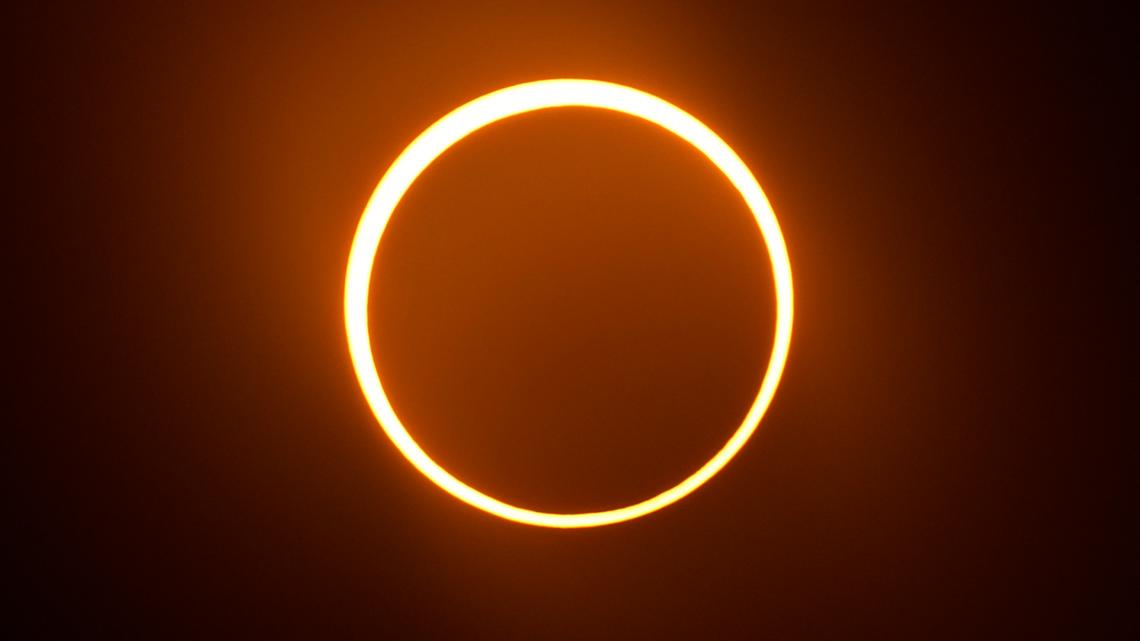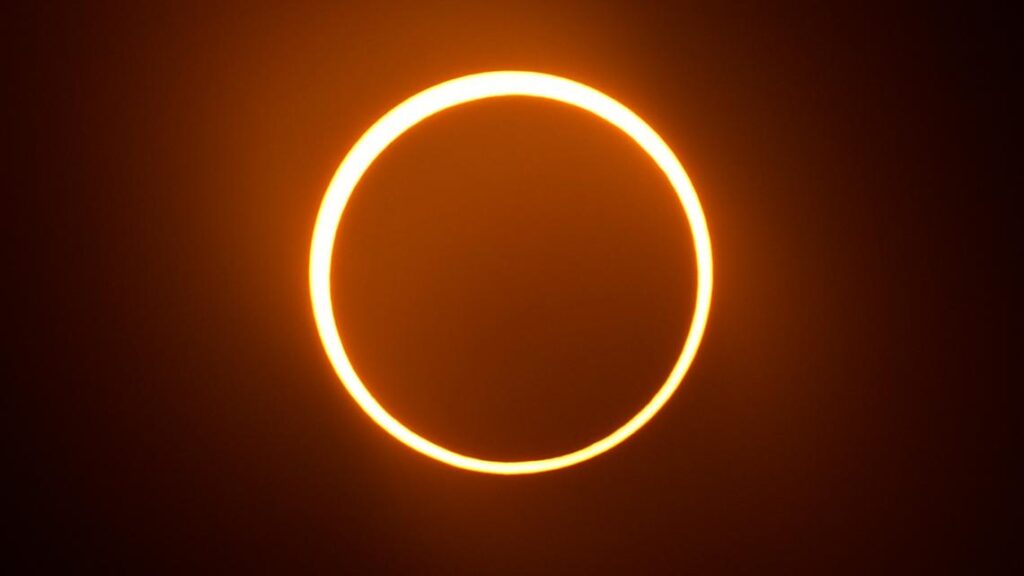
While April’s total solar eclipse wowed millions, October’s astronomical spectacle will only be viewed by a lucky few.
WASHINGTON — The next total solar eclipse may be few years away from returning to the U.S., but a similar astronomical event is coming up next week.
On October 2, an annular solar eclipse will dim daylight as the moon sets itself in front of the sun to create the illusion of a ring of light in the sky. Compared to the total solar eclipse just a few months ago, it will be a much longer spectacle — lasting more than seven minutes.
When is the annular solar eclipse?
The annular solar eclipse will take place on Wednesday, October 2.
Where will the ‘ring of fire’ be visible from?
Wednesday’s annular solar eclipse will have a much smaller audience than the total solar eclipse viewed by millions in April. This is due to the path of annularity, which for October’s event stretches from Hawaii, through the Pacific Ocean and all the way down to Argentina.
For eclipse chasers, the best “ring of fire” viewing spots are on the remote Easter Island and in parts of southern Chile and Argentina.
Hawaii won’t get the “ring of fire” effect but will see a partial solar eclipse on Wednesday, Oct. 2. It is the only part of the U.S. that will experience the astronomical event.
The big island of Hawaii will have the most coverage, with almost 51% of the sun being covered by the moon on Wednesday morning. According to TimeandDate, the partial solar eclipse will begin at around 6:13 a.m. local time and reach its maximum coverage at 6:46 a.m. local time in Kailua-Kona, Hawaii.
Here’s when to watch the partial solar eclipse in Hawaii:
Several cities in Hawaii fall under the partial solar eclipse path. All hours are in Hawaii Standard Time:
- Hilo – Viewable between 5:44 a.m. and 7:56 a.m.
- Honolulu – Viewable between 5:45 a.m. and 7:52 a.m.
- Kailua-Kona – Viewable between 5:44 a.m. and 7:56 a.m.
- Lihue – Viewable between 5:46 a.m. and 7:51 a.m.
- Napili-Honokowai – Viewable between 5:45 and 7:53 a.m.
- Wailuku – Viewable between 5:45 a.m. and 7:54 a.m.
- Waipahu – Viewable between 5:45 a.m. and 7:52 a.m.
What is a ‘ring of fire’ solar eclipse?
During an annular solar eclipse, the moon and the sun will create the effect of a “ring of fire.”
According to NASA, annular solar eclipses occur when the moon passes between the Earth while still being at its farthest point away from Earth. The moon, being farther away from us, appears smaller than the sun and does not fully cover it, resulting in the “ring of fire” illusion.
The word annular is derived from the Latin word “annulus” which means ring, according to TimeandDate.com
Those in the path of annularity will have as much as 90% of the sun blocked by the moon. As a result, people can feel a slight change in temperature and there will be a dimness in daylight much like during a sunset or sunrise, according to NASA.
Since there will be no totality reached, partial and annular solar eclipses must always be observed with certified eclipse glasses or a pinhole projector. Even the tiniest big of light peaking during the “ring of fire” effect can damage your eyes, NASA says.
How often do solar eclipses occur?
Solar eclipses of all kinds happen more frequently than one might think.
NASA breaks down the math to about 2,380 solar eclipses of all kinds every 1,000 years — or roughly 2-3 solar eclipses each year. For total solar eclipses, where the moon completely covers the sun, it works out to two eclipses every three years.
When is the next solar eclipse after 2024?
North America won’t experience totality again until 2033, with Alaska getting sole dibs. Then that’s it until 2044, when totality will be confined to Western Canada, Montana and North Dakota.
There won’t be another U.S. eclipse spanning coast to coast until 2045. That one will stretch from Northern California all the way to Cape Canaveral, Florida.










More Stories
Zelenskyy pledges Ukraine will ‘never accept’ outside deal to end war
Organizaciones latinas respaldan la aprobación de enmienda sobre el aborto en la boleta electoral de Colorado
What does Charlie Blackmon look like without a beard?